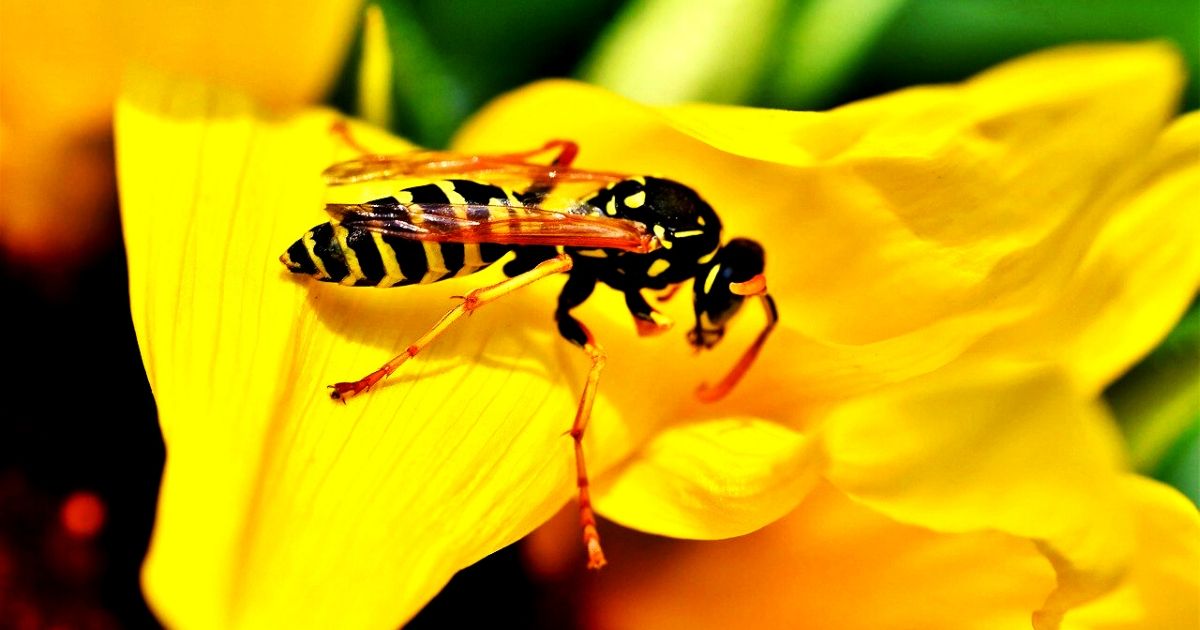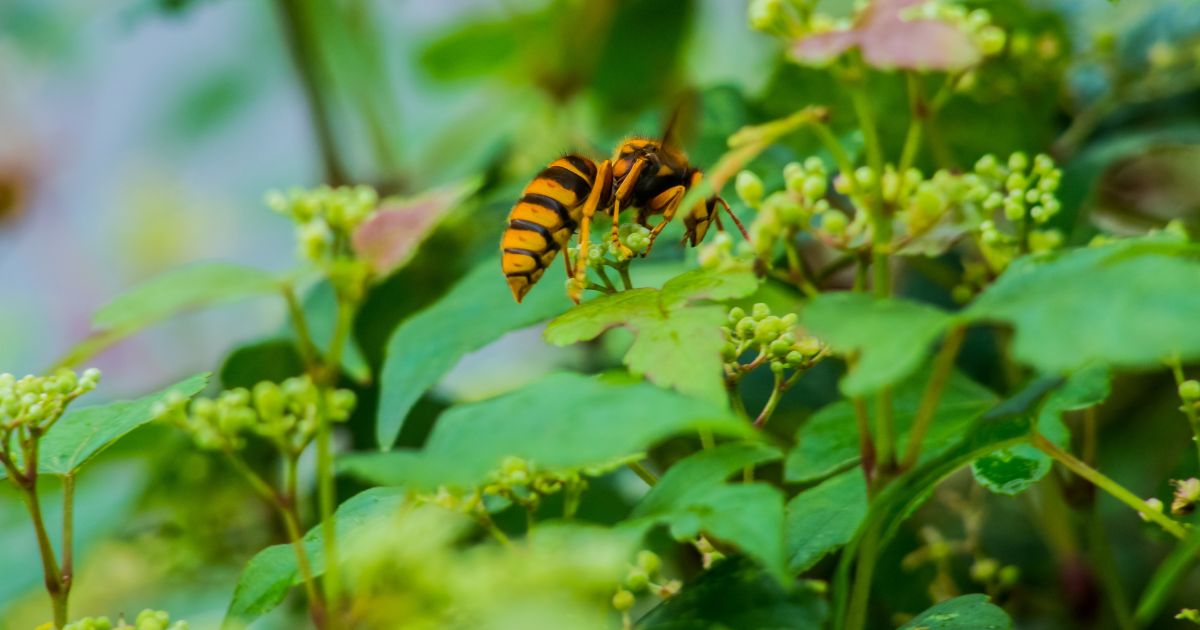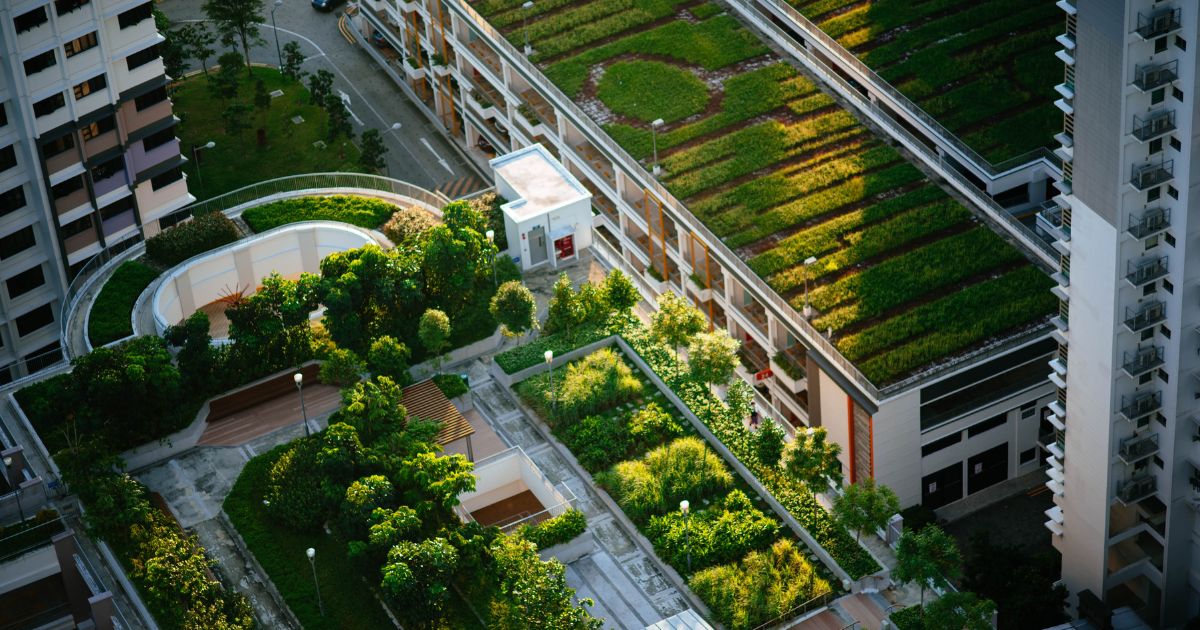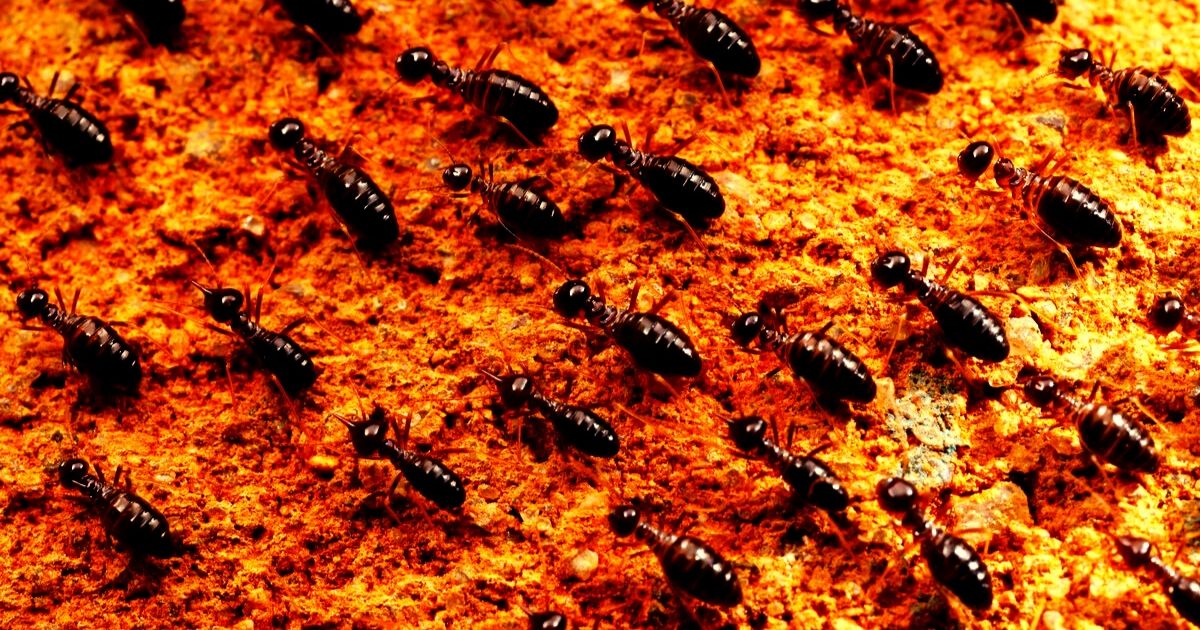The Ultimate Guide to Urban Beekeeping in Singapore
Bees
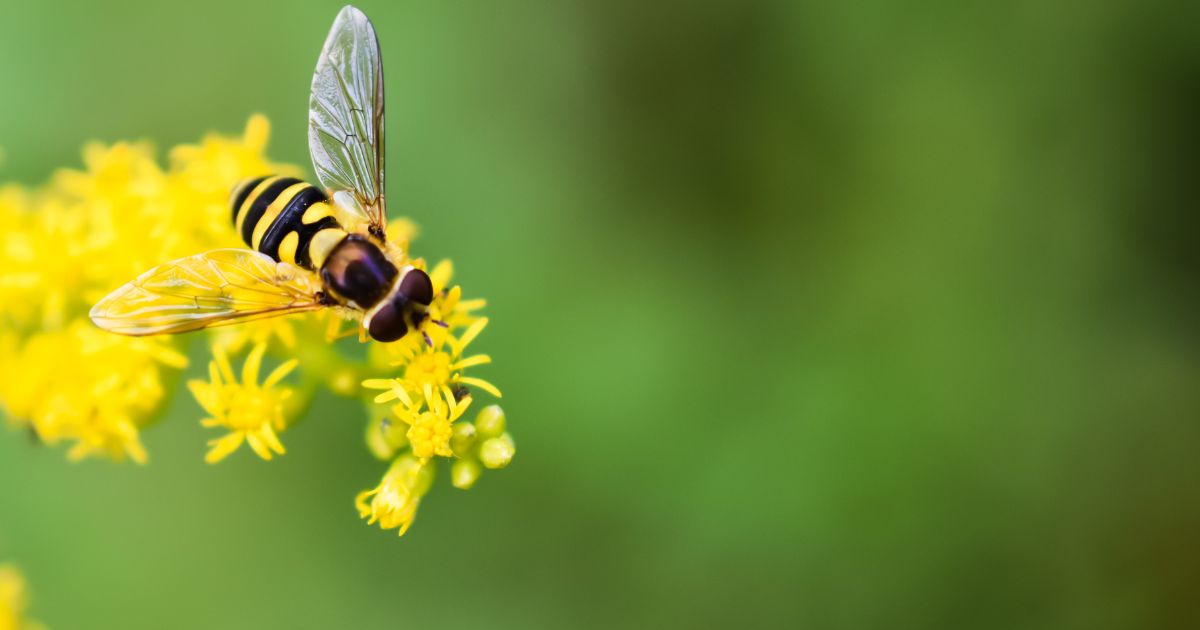
Urban beekeeping has become increasingly popular in recent years, as people become more aware of the benefits of bees and the importance of pollination. It is a practice that helps to restore the balance of nature in urban cities. In this guide, we will share valuable insights for novice and experienced beekeepers and explore everything you need to know about urban beekeeping and its benefits.
What is Urban Beekeeping?
Urban beekeeping is the practice of keeping beehives (colonies) in towns and cities. Unlike traditional beekeeping, which typically occurs in remote locations, urban beekeeping takes place in urban and suburban areas.
History of Urban Beekeeping
Beekeeping has been around for thousands of years, but urban beekeeping is a relatively new practice. It started to emerge in the 19th century with the rise of urbanization when the first enthusiasts began experimenting with beekeeping in cities. The establishment of several beekeeping associations during this period was also essential for the promotion of urban beekeeping. These associations helped navigate the challenges unique to urban settings, offering training and community support.
Urban beekeeping started to gain popularity in the early 2000s, driven by the concerns of the declining bee populations. People also became more interested in sustainable living and local food production. This is also the case for Singapore, where people have a growing interest in urban beekeeping.

Urban Beekeeping Landscape in Singapore
The default method of managing bee hives is to kill the bees, but there are some Singapore-based individuals and associations that promote the importance of bees and how to handle them safely. One of them is The Sundowner Bee Rescue who recently partnered with Killem Pest to save the bees together by moving them to a new location, where they can continue to thrive.
The Role of Urban Beekeeping for the Environment
Urban beekeeping plays a crucial role in the overall environmental health of cities. Bees are vital for pollinating plants, which results in increased biodiversity and ecosystem stability. Urban beekeeping in Singapore helps to increase green spaces and a more diverse plant landscape. This in turn benefits bees and other wildlife, contributing to urban ecosystem health.
Interesting Fact: Urban beekeeping plays a crucial role in local food systems, facilitating the pollination of urban farms and supplying city residents with locally produced honey.
Benefits of Urban Beekeeping
Urban beekeeping is not just a hobby, it is a practice that transforms our environment and urban landscape. Here are just some of the benefits of urban beekeeping in Singapore:
- Bees are essential pollinators for many crops and flowering plants. Their presence in urban areas helps increase fruit and vegetable yields, leading to improved food production and quality.
- Increased Biodiversity. Bees help to support a wide range of other plants and animals in urban areas, so their presence can help to increase biodiversity in urban settings and foster a diverse urban flora.
- Honey Production. Urban beekeeping can provide a source of locally produced honey and other bee products.
- Economic Benefits. Local honey production can also support small-scale beekeeping businesses and local economies.
- Educational Opportunities. Urban beekeeping can help educate people, offering people the chance to learn about the fascinating world of bees. It can help raise awareness about the importance of bees and the need to protect them.
- Building nature-centric communities. Urban beekeeping supports the connection between humans and nature, offering a unique opportunity for community engagement.

Challenges in Urban Beekeeping
While urban beekeeping offers numerous advantages, it also comes with some challenges, which include:
- Finding suitable locations for hives. It is important to find the right spot for bee hives, where they will have access to food and water, and where they will not be a nuisance to neighbours. Find a spot that doesn’t expose bees to pesticides and herbicides as these chemicals can be harmful to bee colonies.
- Limited Forage (Food Supply). Urban areas may lack sufficient forage for bees. Beekeepers need to ensure that bees have access to a variety of flowering plants throughout the year.
- Local Regulations: While the practice is gaining popularity, it is important to understand local regulations and zoning laws. These regulations can often pose obstacles to establishing and maintaining urban bee colonies.
How to Get Started with Urban Beekeeping?
Learn About Bees. Do your research, educate yourself about the honey bees and beekeeping, their biology and behavior. Understanding the bees and how to manage bee colonies will help you become a successful beekeeper.
Legal Considerations. Research the city’s laws and regulations regarding beekeeping and obtain any necessary permits for beekeeping in your city.
Talk to Your Neighbours. Not everyone might be happy about the idea of living next to the bee hives, so it is always a good idea to talk to your neighbours and explain them all ins and outs, and the benefits of having a local honey bee colony.
Select Suitable Equipment. Acquire the necessary beekeeping equipment, such as hives, protective clothing, and tools.
Choose the Right Location. Find a suitable location for your hives that offers access to forage and water, and protection from harsh weather conditions and urban chemicals. Rooftop gardens and community gardens are popular locations for many urban beekeepers. With its numerous high-rise buildings, Singapore seems to have a significant potential for urban beekeeping.
Join a Local Beekeeping Community. Consider joining a local beekeeping association, talking to local beekeepers or taking beekeeping classes to gain practical knowledge and connect with experienced beekeepers.
Source Your Bees and Monitor Your Hive. Source your bees from reputable suppliers and regularly inspect the hives. Check for damaged or worn-out hive components, closely monitor for signs of pests and diseases and promptly address any issues.
Pest Control and Urban Beekeeping
Pest control is a significant concern for urban beekeepers. Bees can be susceptible to a variety of pests and diseases, so it is important to monitor hives closely and take steps to control any problems that arise.
It is important to choose a pest control method that is safe for bees and other beneficial insects. Integrated pest management (IPM) practices are essential for controlling these threats without relying heavily on chemical treatments, which can harm the bees and contaminate the hive products.
With proper education and management, urban beekeeping can create a more sustainable and bee-friendly urban environment, and bring nature’s wonders to local communities.
Author: Soleha Nisaa
Frequently Asked Questions
Urban beekeeping is suitable for different cities, but its success may depend on local environmental factors, regulations, and community support.
While prior beekeeping experience can be beneficial, urban beekeeping is accessible to beginners. Many resources and support networks are available for newbie beekeepers.
Common pests and diseases include the Varroa mite, wax moths, and small hive beetles. Regular hive inspections and integrated pest management practices are essential for keeping these threats in check.
Wasp vs Bee: What’s the Difference?
Bees

Bees and wasps may seem similar and are often mistaken for one another, however these creatures have their unique characteristics. Let’s explore the similarities and differences between these two insects, what individual traits they have, and how you can distinguish between them.
Are Wasps and Bees the Same?
No, wasps and bees are not the same. Although they both belong to the order Hymenoptera and share some similarities, they are different species with their own distinct behaviors, appearances, and ecological roles.

What You Should Know About Wasps
Wasps are predatory insects that come in various species, the most common ones being yellow jackets, hornets, and paper wasps. Here are the key factors to know about wasps:
- Predatory Nature: Wasps feed on other insects, including caterpillars and spiders, making them valuable for pest control in ecosystems.
- Nesting Habits: Wasps build nests from paper-like materials; their nests can be found in trees, shrubs, and even underground.
- Distinctive Appearance: Wasps typically have slender bodies with bright yellow and black markings. They are more slim-bodied than bees.
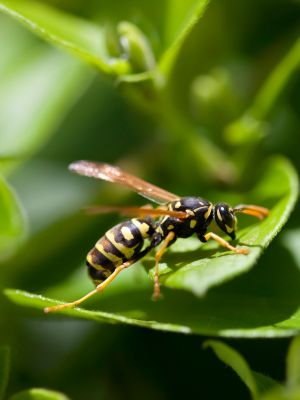
What You Should Know About Bees
Bees, on the other hand, are known for their essential role in pollination and honey production. Here’s what you should know about bees:
- Pollinators: Bees are crucial pollinators that help fertilize plants, ensuring the production of fruits, vegetables, and flowers.
- Honey Production: Honey bees are famous honey-makers – they collect nectar from flowers, transform it into honey, and store it in their hives.
- Furry Bodies: Unlike wasps, bees have hairy bodies that help pollen collection and transportation from one flower to another.
How are Wasps and Bees Similar?
Although wasps and bees are different insects, they share some similarities:
- Both wasps and bees can sting, but only wasps and some types of bees can sting multiple times, while honeybees die after the sting.
- Both wasps and bees contribute to the world’s ecology, but in different ways.
- Bees and wasps are both nectar-feeding insects.
- Both bees and wasps are most active during the warmer months of the year when flowers are in bloom.
How Do You Tell the Difference Between a Bee and a Wasp?
Here are some key characteristics that can help you distinguish between bees and wasps:
- Body Size: On average, bees are smaller – up to 15mm in length, while wasps can be up to 20 mm in length.
- Body Shape: Bees generally have rounder and furrier bodies, while wasps tend to have slimmer bodies and are less hairy.
- Coloration: Bees are often covered in brown, black, or yellowish fuzz, whereas wasps typically have distinct yellow and black markings or may be brown or reddish.
- Behavior: Bees are less aggressive compared to wasps. Bees are typically focused on pollination and are less likely to sting unless provoked, while wasps can be more aggressive and may sting in defense or when they feel threatened.
Pro Tip: Since wasps and bees both play a vital role in our ecosystem, it’s important to consult pest control professionals when dealing with a nest problem, for safe and sustainable removal.
Recognizing these differences can help you better understand and coexist with these valuable creatures in our ecosystems. Remember to exercise caution and respect when encountering either of them, as both play vital roles in our world and can also sting when feeling threatened.
Author: Soleha Nisaa
Frequently Asked Questions
No, a wasp is not a bee. Wasps and bees are two different insects, although they share some similarities due to their common classification.
Wasps and bees are related within the same order, but are distinct insects with different appearances, behaviors, diets, and ecological roles. While hornets are a type of wasp, they also have distinct characteristics, including their larger size, distinct black and white or reddish-brown coloration, and nest-building habits.
Wasps have minimal or no hair on their bodies. Unlike bees, which have fuzzy bodies covered in hair. This lack of hair is one of the key distinguishing features between the two insects.
Yes, wasps are generally considered to be more aggressive than bees. Wasps can be more territorial and aggressive in defending their nests, and are more likely to sting if they perceive a threat. Bees, on the other hand, are more likely to sting when they believe their hive is in danger.
No, not all bees make honey. Honey bees are the primary species known for honey production. Other bee species may not produce honey at all.
To coexist peacefully, avoid disturbing their nests, wear protective clothing if necessary, and keep food and sweet beverages covered during outdoor activities. If dealing with a nest problem, consider consulting a pest control professional like Killem Pest for safe and sustainable removal.
Related Posts
How to Relocate Bees Without Killing Them
Bees
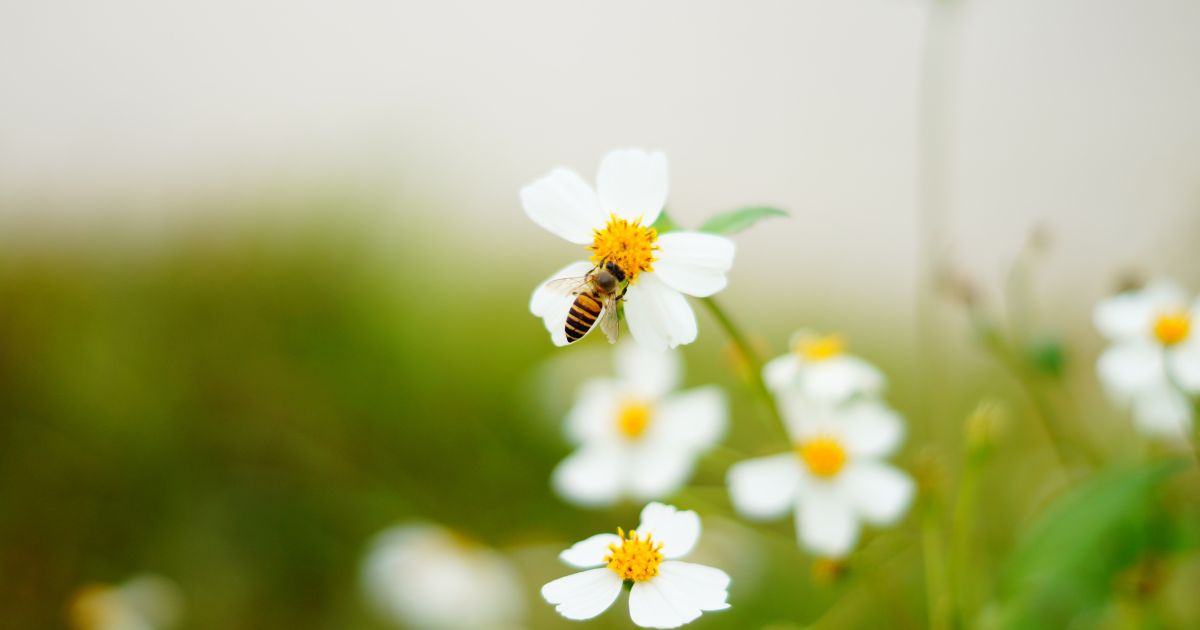
Bees play a vital role in the ecosystem of the planet. Besides offering honey, beeswax, pollen and other products, bees also help plants reproduce. They do this through pollination, a process whereby the bees take and spread the pollen from flowers. The bees thereby directly help plants, flowers, trees and other food crops to grow. Without bees, human beings would not have the same access to vegetables and fruits, and nature would be far less diverse. We need bees! In this article we will explore a unique approach to bee removal without killing them.
Why you should remove bees?
In many cases, there is no need to remove bees. They often locate themselves in trees away from urban areas. However, there are some cases where bees settle near a person’s home. If you leave them alone, they most likely won’t cause any issues. But sometimes the bees get too close for comfort and people prefer to call a pest control company to remove the bee hive.
These are some other common reasons why people prefer to remove bees:
- Allergic reactions: Some people are highly sensitive to bee stings, in rare instances even causing life-threatening reactions. It’s clear that a bee hive needs to be removed if the bees are located close to a person who has a bee allergy.
- Noise: Bees can be an annoyance due to their loud presence, especially when there is a large bee colony.
- Attract other pests: While bees are usually harmless by themselves, they can attract other pests like rodents.
- Structural damages: Bee hives occasionally cause structural damages to properties.
- Self-protection: Bees sometimes awkwardly and unknowingly position themselves close to areas where they themselves can get disturbed, such as near a highway or busy urban area.
If any of these situations applies to you, you may wonder what your options are. Many people think that killing the bee hive is the way forward, but here at Killem Pest we relocate the bees. The remainder of this article will focus on how to remove bees without killing them.
Pro Tip: Bee decline affects human lives, so it is important to control bees without killing them by hiring bee relocation professionals.
Can bees be removed without killing them?
The simple answer is yes: Bees can be removed without killing them. Killem Pest collaborates with The Sundowner Bee Rescue to not only safely remove bee hives, but to give the bees a new, safe home as well.
In this way, bees can continue their vital practice of pollination in a protected area.
Ways to remove bees without killing them
Removing bees by yourself may not be a smart idea. There are various safe ways to remove bees without killing them, and they all involve the help of a pest control professional and/or beekeeper. To handle a bee removal, you need to have the right protective equipment, knowledge as well as experience. So unless you have a background in beekeeping or pest control it is best not to attempt to remove the bees yourself.
A professional will start with identifying the type of bee and the size of the hive. They will sometimes apply smoke, not to harm the bees, but to calm them. This creates a safe foundation for removing the bees without killing them.
Then, when the bees are least aggressive, the removal job can take place. Depending on the type of bee, a beekeeper or pest control company will vacuum away the bees into a container or cut around where the bees are located, ie a piece of tree trunk. This can be a tough job, especially if the bees are located at higher levels. Once the hive is removed, it can then slowly be relocated to a new site where the bees can live a happy, carefree life.
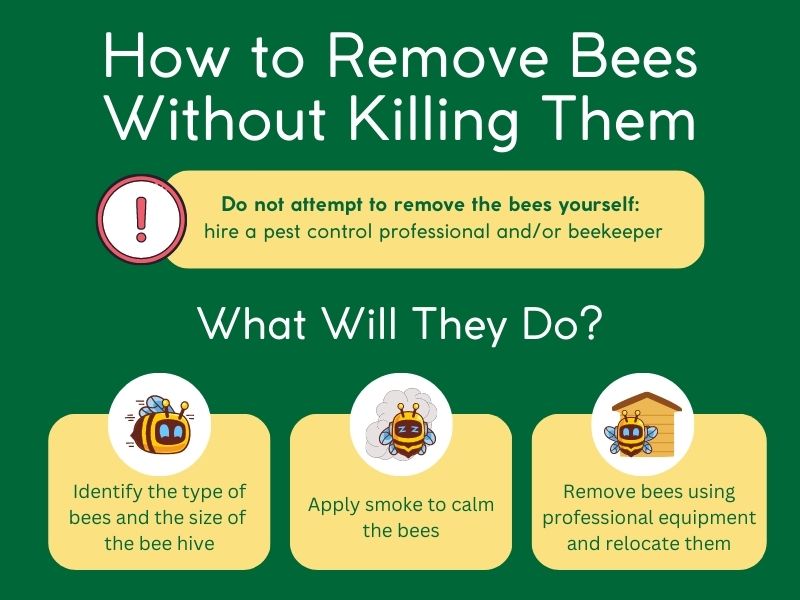
Early signs of a formation of bee hives
People often contact a professional when a bee hive is large. It is best to take note of the early signs of bee hive formations, as it will make a bee relocation job a little easier and safer. Also, by detecting bee hives in their early stages near properties, there is less risk of getting disturbed by the bees.
Scout bees, as their name implies, are bees who’s main role is to do field research. Their job is to find a suitable spot for a bee hive. If you suddenly notice lots of bees flying around, it may well be a bunch of scout bees.
Wax flakes are one of the first things bees make when they start building a bee hive. The flakes or small and have a white colour. They can be found on walls or in trees, basically near any potential settlement for bee hives. Spotting these wax flakes may be an early sign of the formation of a bee hive.
In general, the clearest sign of a potential bee presence is increased bee activities around your property. They may also be heard through their loud buzzing sounds.
So once you’ve spotted a bee hive, how to remove it?
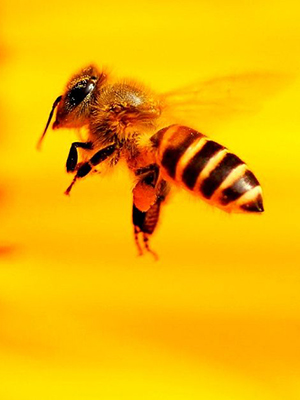
How to remove a bee hive
We’ve learned two main things so far when it comes to how to remove a bee hive safely:
- Don’t do it youself, leave it to a professional beekeeper or pest control technician
- There is no need to kill the bees, as they can be relocated
Killem Pest encourages the safe removal of bee hives without doing harm to the bees. We recognize that bees play an important role in the biodiversity of the planet, and that bees do far more good than harm.
Simultaneously, we know that bees can cause discomfort for people, especially when there are large swarms of bees.
Together with The Sundowner Bee Rescue, we offer a unique, sustainable approach to handling bee problems. While we provide help and expertise with safely removing the bees, The Sundowner gives the bees a safe home on their roof terrace, where they can live freely and enjoy the flowers that are abundant.
We believe this is the ultimate solution for bee issues in urban areas, and a solution that should be adopted by more pest control companies around the globe. Together we can save the bees!
Author: Soleha Nisaa
Frequently Asked Questions
It is not recommended to relocate bees on your own, as it can be dangerous without the proper knowledge and equipment. It is best to contact a professional beekeeper or a pest control company that offers humane bee relocation services.
Most types of bees can be relocated, including honeybees, bumblebees, and carpenter bees. However, some species, such as Africanized bees, can be more aggressive and may require more specialized equipment and techniques for relocation.
Bees should be relocated to an area that is at least several miles away from their original location to prevent them from returning. It is also important to ensure that the new location has suitable resources and habitat for the bees to thrive.
If you have a bee infestation on your property, it is best to contact a professional pest control company that offers humane bee relocation services. Do not attempt to remove the hive or disturb the bees on your own, as this can be dangerous and can lead to further harm to the bees and yourself.
Bees can be naturally deterred by the smell of cucumber, peppermint, garlic, and citronella. Placing these near the hive or in the area where they are gathering can make the bees go away.
The Ultimate Guide to Urban Farming
Bees

With the increasing rise in food prices, it is a smart idea to learn about urban farming. Urban farming is a great way to produce your own fresh food and food that can help others in your community. It is also a great way to teach kids responsibility and to teach them more about where their food comes from. It’s also nice to have affordable fresh home-grown vegetables to use in your recipes rather than overpriced store-bought vegetables.
What is urban farming?
Urban farming simply means cultivating and distributing food in a developed area such as in a city or suburban area. Families can potentially have their own vegetable gardens and fruit trees if they are able to set aside space and put in the time and effort that is needed. Urban farming can also include having chickens, pigs, or sheep, for example.
You may also see urban farming referred to as urban agriculture. Urban farmers typically do sell their products to the community such as at local farmers’ markets or to shops that are in their neighbourhoods. Urban farming includes small vegetable gardens or commercial farms in the city where produce is grown for one’s own use and to sell locally.

History of urban farming
Urban farming is not a new concept. In fact, urban agriculture dates as far back as 3,500 B.C. Evidence has also been found of urban farming in Persia and in Peru. Urban farming was common in European cities in the late 1800s. The idea in Europe was to help individuals in impoverished neighbourhoods to grow their own food and to purchase locally grown foods.
This is still a good idea today and everyone can benefit from growing and selling their own food close to where they live. It is predicted that urban gardening will increase in the future. Today, urban farming in Singapore is on the increase as a way to increase food security for the population.
How does urban farming help the environment?
Besides making fresh food available directly to people in the neighbourhood, there are other environmental benefits to urban farming. The farms create more green spaces and enhance biodiversity. This has been the case in Singapore.
Urban farming in Singapore can help the climate. A lack of vegetation in cities is associated with the heat island effect. This effect is when cities become extremely hot because the buildings and other man-made structures trap heat.
Food that has to be transported from far away is not as fresh and is more likely to be contaminated with bacteria than homegrown food. Food that doesn’t need to be transported long distances also cuts down on air pollution, which may help with climate issues. Locally produced food may also be cheaper to buy because transport costs are greatly diminished.
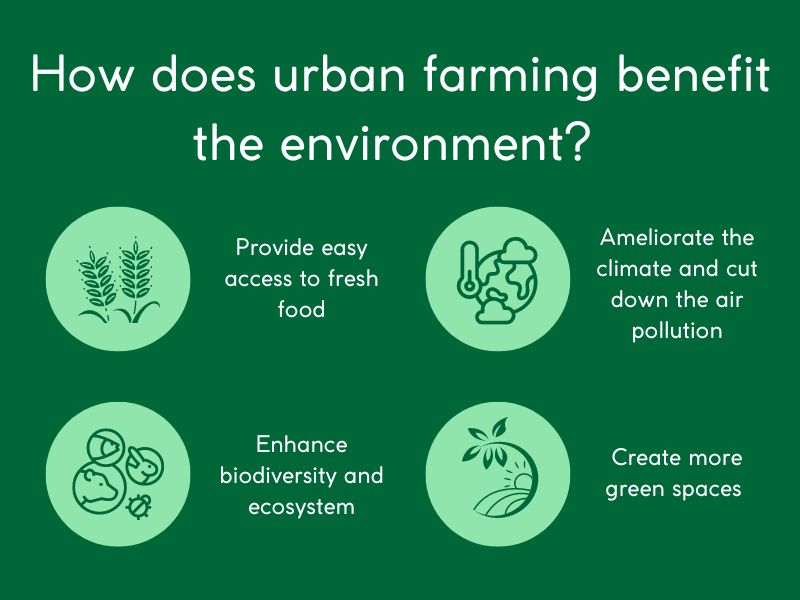
Is urban farming sustainable?
Urban farming is sustainable and eco-friendly compared with traditional methods in the sense that transportation costs and pollution are both reduced. There is a large reduction in the use of fossil fuels involved in transporting produce from far away into cities.
In urban gardens, the food is produced close by and is readily available to neighbours. Proper farming methods that are either hydroponic or focus on maintaining soil fertility make for sustainable farms.
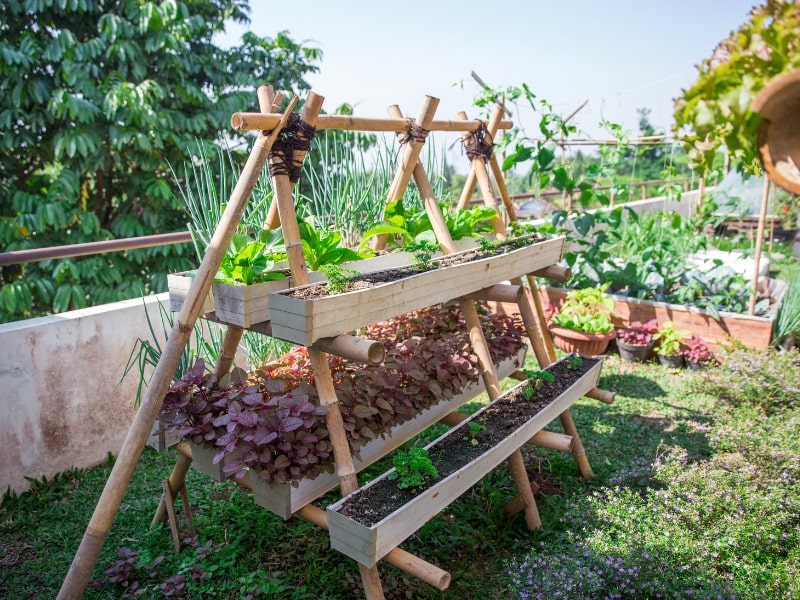
Pest control and urban farming
Urban farming uses fewer pesticides, in general, when compared with large commercial farms. This is a benefit since it cuts down on expenses and doesn’t affect profits as much; pests do plague urban farms but there are some things that can help before you resort to pesticide use.
Having leaf litter and flowers nearby are recommended as a way to attract natural predators like spiders and parasitoid wasps.
Finding ways to control pests is important even for a small farm or vegetable garden but it is safest to contact a reputable company regarding what pesticides to use (if any). A benefit of high-tech indoor farming is that pesticides will not be needed because pests are usually not present.
What is Singapore doing to promote urban farming?
Urban farming in Singapore is on the rise. The Singapore government is promoting urban farming and has an Agriculture Productivity Fund to help support innovative farming. It is important that public and private entities cooperate when it comes to urban agriculture.
The government of Singapore has developed a “30 by 30” initiative. With this initiative, the idea is for the country to produce 30% of the food they need by the year 2030.
The government also plans to use multi-story car park rooftops as food gardens. Besides government initiatives, individuals in Singapore have developed urban farming programs which have helped start farms on rooftops and in other areas in Singapore.
Fun Fact: Singapore urban farming initiative is aiming to produce 30% of the food they need by the year 2030.
Why is urban farming important in Singapore?
Urban farming is important in Singapore because the country depends heavily on imported foods (90% of the foods are imported). Singapore is a highly urbanized region making it tricky to farm using the traditional open fields usually associated with farming.
There are many challenges to urban farming in Singapore because it is a highly-urbanized area and finding space is difficult. Creative methods of land use where rooftops are used are a way this can be overcome, and schools can also be used to set up small vegetable gardens.

Conclusion
Urban farming is a growing trend in countries such as Singapore where space to farm is limited. There are many factors to consider with urban farming in Singapore, such as space available, and the costs involved. The government of Singapore is eager to increase urban farming in the country to reduce dependence on imports. There are many different ways you can have a thriving urban farm — it just takes some creativity.
Bee Relocation
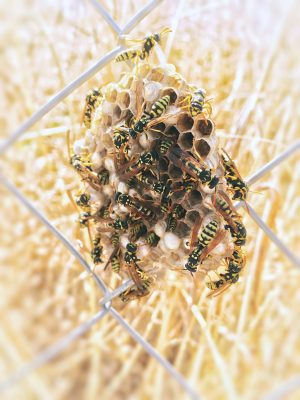
We love urban farming, but it is not the only sustainable initiative Killem Pest focuses on. Bee relocation is another big part of what we do. That’s right, relocate instead of exterminate. Bees play an essential role in the ecosystem of the planet, but sometimes they get too close to populated areas. That is when action needs to be taken.
Frequently Asked Questions
The purpose of urban farming is to promote sustainable local food systems. Urban farming improves food access by providing communities with fresh, affordable, and quality products.
Yes, urban farming improves the local biodiversity and helps to reduce the pollution related to the transportation of produce.
With the reduced amount of transportation and the rise of indoor urban farms that are sealed off from outside pests, there is no need to add preservatives or pesticides.
The Ultimate Guide to Bee Prevention, Treatment and Control in Singapore
Bees are one of the most important pollinators. Without bees and other pollinators such as flies, butterflies and beetles, we would not be able to produce enough crops to feed the global population. Having said that, the presence of bees on some occasions may cause inconvenience and disturbance to humans.
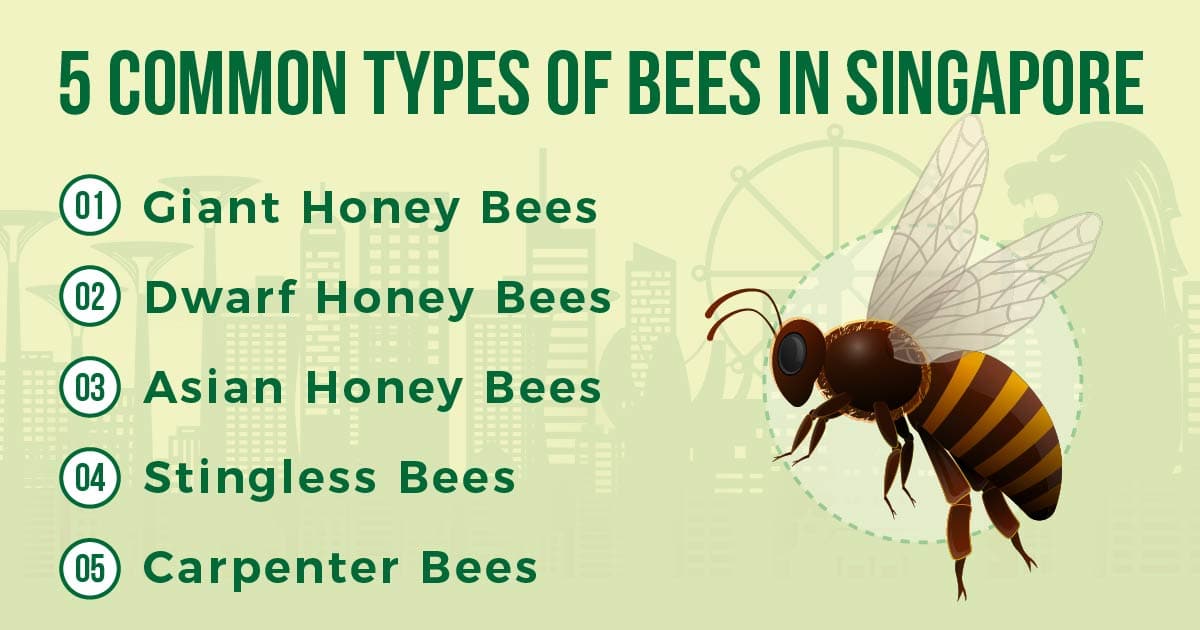
Types of Bees in Singapore
There are more than 20,000 species of bees in the world. The honey bees might be the most famous type of bee. Other species are important to the ecosystem too.
What are some of the common species of bees found in Singapore?
- Giant Honey Bees
- Dwarf Honey Bees
- Asian Honey Bees
- Stingless Bees
- Carpenter Bees
- Mason Bees
- Leafcutter Bees
- Sweat Bees
Giant Honey Bees
The giant honey bees (Apis dorsata), also known as Malayan honey bees, get their name from their large size. Giant honey bees can become 17 – 20mm in length. This species usually has their nests built in an exposed area far off the ground.
Giant honey bee nests are commonly spotted on tall trees and building structures. The nests consist of large single combs that can reach up to 1.5m in length and 1m deep. The combs can be seen hanging down tree branches or other structures.
Dwarf Honey Bees
The dwarf honey bees (Apis florea) are small-sized (7 – 10mm long) honey bees. They are commonly found in the tropical region. The dwarf honey bees build single combs as their nests. The combs can be found around small tree branches instead of hanging down the branches as in the case of giant honey bees.
Asian Honey Bees
The Asian honey bees (Apis cerana) are approximately 10mm in length. They are known to nest in empty spaces and cavities so they can be found in attics and roof cavities. Some of the cavities or enclosed openings are unreachable for humans. Thus, it is more difficult to get rid of their nests compared to the nest of outdoor species.
Stingless Bees
The stingless bees (Trigona spp.) are very small sized, measuring around 3 – 5mm. They also build their nests in cavities. Sometimes they can be seen entering or exiting the nests through an entrance tube. As their name suggests, a stingless bee cannot sting, but it can still bite when it feels threatened.
Carpenter Bees
The carpenter bees (Xylocopa spp.) are the largest in Singapore. They are about 20 – 30mm in length and are usually dark-coloured. The carpenter bees form their nests by creating burrows in solid wood which branch out into parallel passageways. Carpenter bees are solitary bees which live singly or in small groups and they do not form colonies. Although the sight of these bees can be intimidating due to their large size, they are relatively harmless unless disturbed.
Mason Bees
Mason bees are unusual in that they collect mud to construct bee nest. These types of bees are relatively small, ranging from 6 – 10mm, and have a black or metallic blue colour. You may find these pollinators in urban gardens around Singapore.
Leafcutter Bees
Leafcutter bees use pieces of leaves to build nests. They are also tiny creatures with a black and metallic green colour. You will find leafcutter bees in Singapore’s parks, gardens and other green outdoor environments.
Sweat Bees
As their name implies, sweat bees ar attracted to sweat. Human sweat to be precises. Sweat bees have a metallic, green colour and they spend their time in gardens and parks around Singapore.
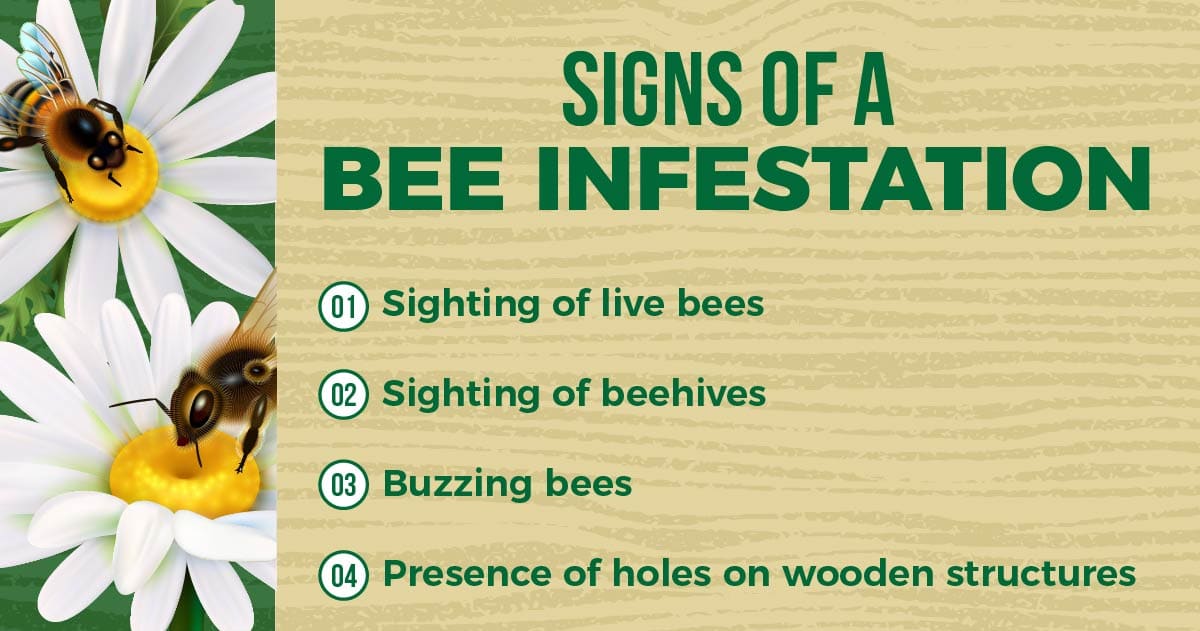
Signs of Bee Infestations
1. Sighting of Live Bees
Sighting of bees is one of the most obvious signs that indicate an infestation. Seeing bees flying in or around your house may indicate that their hive is nearby. Follow the path of their flight and you might be able to trace their nests.
2. Sighting of Beehives
The presence of a beehive indicates that your house is infested with bees. The hive is located on the branches of the plants in your home. In some cases, the hive is concealed in empty spaces in the building. A large number of bees surrounds a beehive. Thus, it is not difficult to identify a hive once you have spotted it.
3. Buzzing Bees
In some cases, house owners may not be able to spot bees. This is because bees build their nest high up from the ground. However, due to their large number, the buzzing sound that they produce may lead you to their nests.
4. Presence of Holes on Wooden Structures
Carpenter bees create burrows in wooden structures and leave a hole on the surface of the wood. If you have been noticing holes on your furniture or wooden decorations, you might be having carpenter bees in your house.

Life Cycle and Biology
Most bees are social insects that live in colonies and practice division of labour. The three functional castes in a bee colony are the:
- Queen
- Workers
- Drones
The queen’s primary function is to reproduce and maintain the unity of the colony.
The workers are responsible for maintaining the nest, tending to the young ones and the queen, protecting the nest as well as foraging for food.
Drones are males whose primary function is to mate with an unfertilised queen. They die shortly after mating.
If the queen dies, a new queen gets selected. The new queen is fed with royal jelly (a nutrient-dense substance that is essential for the development of a queen bee) by the workers.
Bees undergo complete metamorphosis. Their life-cycle consists of four stages:
- Eggs
- Larvae
- Pupae
- Adulthood
In a honey bee colony, a queen bee can produce thousands of eggs per day in the hexagonal cells that form the honeycomb. Fertilised eggs will hatch into female workers. Unfertilised eggs will become males (drones).
The bee larvae are white, legless and require the workers to feed them. The larvae grow into pupae. During this stage, the wings, legs and eyes form, transforming the white coloured worms into the bee that we know. During the pupal stage, the bees do not eat so they depend on all the nutrients stored when they are in the larval stage.
Adult bees then emerge from the wax cells to fulfil their tasks as a member of the colony.
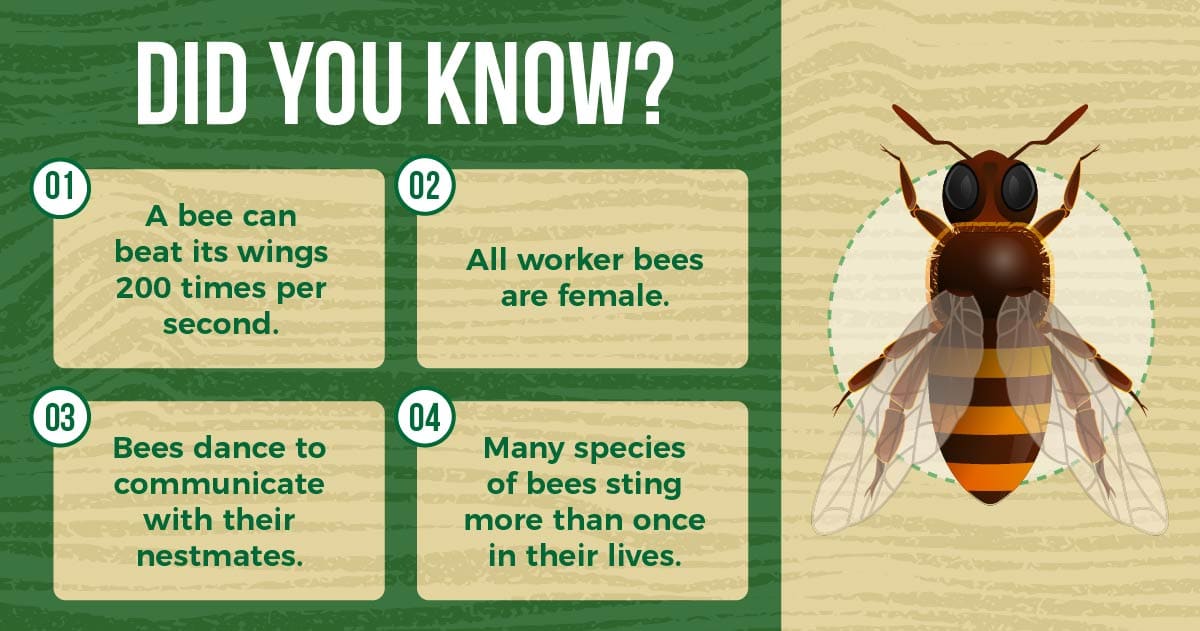
Hazards
Pain Caused by Bee Stings
One major reason that many people fear or detest bees is their ability to sting. Bee stings can be painful and annoying. Bees sting to protect the colony when they feel threatened, and for honeybees, they lose their lives doing so.
When a honey bee stings a human, it is not able to pull out its stinger, so when it tries to escape after stinging, it will break off the rear part of its body and damage its internal organ.
Other species of bees have a smooth stinger that can be removed from human skin after getting stung, causing them to be able to sting more than once in their lifetime.
Warning: Allergic Reaction to Bee Stings
To most people, bee stings cause pain that goes away after a few days or even hours. However, to people that are allergic to bee stings, the reaction can be lethal in severe conditions.
Severe allergic reactions do affect not only the skin but also cause swelling of the throat, difficulty breathing, nausea, dizziness and loss of consciousness. In most cases, medical attention is not required for a bee sting. If severe allergic reactions develop, you should seek medical care immediately.
Structural Damage Caused by Carpenter Bees
The carpenter bees get their name from the fact that they affect wooden structures. They do not consume the wood, but they create burrows and nest inside the wood. Carpenter bees create passageways and tunnels to make space for their eggs and young ones. They cause damage to the aesthetics of the wooden structures by forming holes on the surface of the structures. In doing so, they cause risks to the stability of the structure.
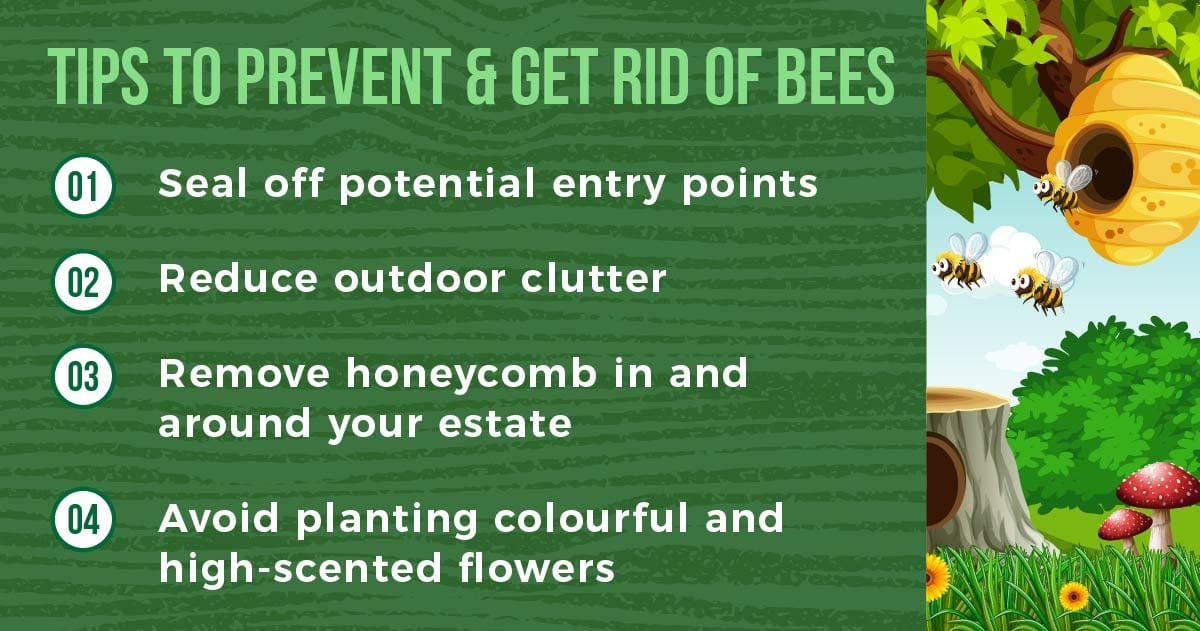
Tips to Prevent and Get Rid of Bees
1. Seal off potential entry points
Bees can access a hole with only a quarter of an inch, approximately 0.6cm. We recommended inspecting your premise for any possible entry points for bees. The entry points found can be sealed up using durable materials such as caulk-based silicone, metal screen or hardware cloth. However, this method needs to be carried out before a bee swarm is present.
2. Reduce outdoor clutter
Remove or reduce clutter around the house can prevent bees from nesting in the yard. Unused items, appliances and lawn equipment around the house can attract bees to build their hive. What’s the reason for that? Unused materials and equipment can provide shelter for bees to thrive, especially when the house is surrounded with plants and flowers (presence of food source).
3. Remove honeycomb in and around your estate
Make sure there is no honeycomb left in and around your house. The presence of honeycomb left by previous beehives will release pheromone scent that can attract newcomers. Honeycombs are usually located inside inaccessible areas such as attics and roof eaves. Hence, sometimes we may need to repair a roof portion after removing the honeycomb.
4. Avoid planting colourful and high-scented flowers
Flowers that are blue, violet, purple, yellow and white can attract bees to come and thrive. Also, planting high-scented blooms will further lure them into coming over to your garden.
If you wish to have beautiful and colourful flowers in your yard but do not want them to become one of the bees’ favourites, you can opt to plant trumpet-shaped flowers such as morning glory and narcissus. These trumpet-shaped flowers do not look much appealing to bees as it is difficult for bees to reach for the nectar.
DIY Methods to Prevent and Get Rid of Bees
There are some methods to deter bees from nesting around your house without killing them. These methods make use of the strong smells released from substances or plants. For example, mothballs. Bees do not like the odour of mothballs.
You can hang mothballs around areas where bees are active. This will help keep bees away. You can also plant the following:
- Mint
- Citronella
- Eucalyptus
These three act as strong bee repellents. Mint, citronella and eucalyptus are easy to grow and help enrich your garden.
If it is too late to deter bees (if they have already built their nest in your house), you can try to scatter some cinnamon around their nest. The strong smell released by cinnamon can make bees relocate to another place for nesting.
Natural Bee Repellents
Let’s take a closer look at how to repel bees the natural way. There are some safe and natural bee repellents. Note that we always prefer safe relocation of bees over any method that can potentially harm or disrupt bees. Only use the natural bee repellents if the need is urgent, but think about whether a bee relocation done by a professional is a better way to get rid of bees. Please also only use these repellents with care. For example, you should not spray onto bees or bee hives directly to ensure the ecosystem remains intact.
How to repel bees:
- Essential oils: Various essential oils are both powerful and safe to use. These include tea tree, lemongrass, peppermint and eucalyptus oils. Mix the oils with water to create a strong natural bee repellent and spray it on the areas you want to protect.
- Vinegar: Sour scents are not what bees like. It is one of the smells that bees repel heavily. Vinegar is natural sour scent that you can mix with water in a spray bottle.
- Cinnamon: Cinnamon is a cheap, natural bee repellent. All you need to do is purchase cinnamon powder and place it in the areas where the bees are active.
- Garlic: We all know about the healing properties of garlic, but did you know what it is also one of the plants that bees repel? Just crush up some garlic gloves and place them in the areas where bees are active.
Pro Tip: Pest management professionals can help you get rid of bees and relocate them in a safe and effective way.
Professional Bee Treatment
The preferred method for treating bees is relocation rather than extermination. After removing beehives from a property, they can be relocated to a safe environment.
Bees that we commonly encounter are generally non-aggressive. However, their presence may worry some people as they can sting when provoked. Killem’s team of trained pest management professionals has all the experience needed to handle bees in a safe way.
Frequently Asked Questions


